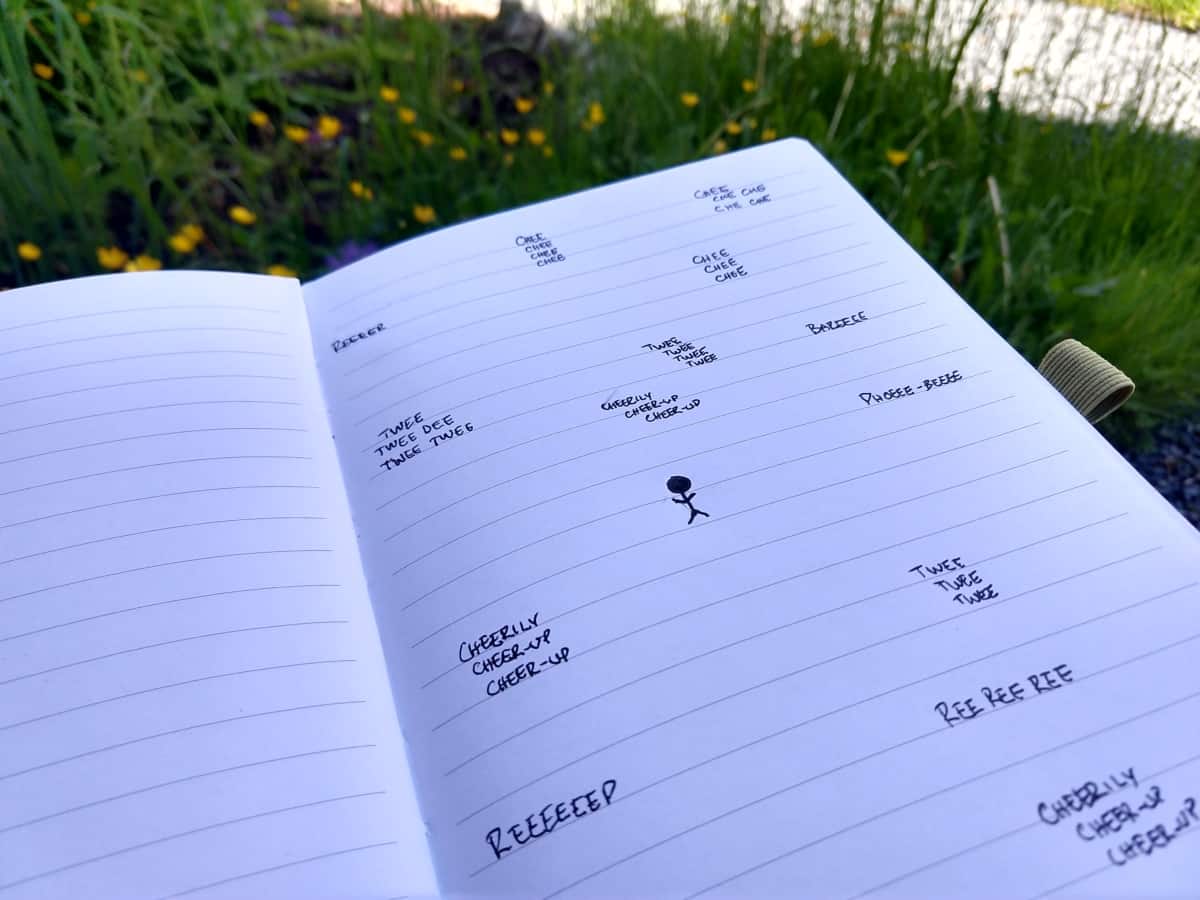
Mountain School @ Home: Lesson 9 – Learning Bird Calls
 Students! Parents! Teachers! During this time of school closures and stay-at-home guidelines, North Cascades Institute is sharing lessons and activities from our talented Mountain School instructors. We hope these will inspire students of all ages to continue to learn about the natural world and discover new connections to the outdoors from home. This lesson was created by Mountain School instructor Lindsay McCord. Find more lessons and activities on our blog or website.
Students! Parents! Teachers! During this time of school closures and stay-at-home guidelines, North Cascades Institute is sharing lessons and activities from our talented Mountain School instructors. We hope these will inspire students of all ages to continue to learn about the natural world and discover new connections to the outdoors from home. This lesson was created by Mountain School instructor Lindsay McCord. Find more lessons and activities on our blog or website.
Learning Bird Calls
Identifying birds and their calls can seem a daunting challenge when there seem to be so many different types. Starting small and practicing with common birds near you can jumpstart you into experiencing the outside world in an entirely new way! The great thing about learning bird calls is that there are hundreds for you to learn!
Bird calls can tell you both what the bird is and where to look for it. This is especially useful for small camouflaged birds and birds that are active during the evening when it is too dark to see them. Each bird call is different and each bird makes a couple different calls or songs depending on why it is calling.
Mapping bird calls with a Sit Spot
A great way to start identifying bird calls is to do a Sit Spot—sit quietly in an outdoor spot for 10 minutes while listening to the sounds around you. Check out Mountain School @ Home Lesson 1 for more on Sit Spots. As you sit and listen, record the bird sounds around you on a sound map. Using a sheet of paper (or the space provided on reverse) mark yourself in the center and record the sounds that you hear as they are in relation to you. Writing down the calls as if they were sounded out words will help you remember what you heard. If many birds are calling, focus on writing an accurate representation of the sounds rather than recording every call that you hear.
Listen for these 6 common and distinctive bird calls, comparing them to your sound map. Do any of them sound familiar? After comparing the sounds to your notes, listen to the calls again, practice quizzing yourself or have a friend or family member quiz you a couple times. Return outside and using your memory of the calls, try to pick out the calls you learned.
American Robin: “cheerily, cheer-up, cheer-up, cheerily, cheer-up”
Black-capped Chickadee: “chicka-dee-dee-dee” or “feee-bee”
Song Sparrow: cheerful song of “tweets”
Barred Owl: “who cooks, who cooks for youuu”
Red-breasted Sapsucker: “waaahhhh”
Varied Thrush: whistled “reeee”
To find additional recordings of bird songs and calls, check out the Cornell Lab of Ornithology at www.birdsoftheworld.org or use their birding app Merlin to compare the bird calls that you hear.
Some questions to reflect on:
- Why might a bird make a noise?
- Why would a bird have multiple different calls?
- What might they be trying to communicate?
- What type of information would be useful to a bird?
- What do bird calls tell us?
Tips for mastering bird calls
Practice. Practice. Practice. Repetition helps cement them into our memory. Come back to the bird calls after a day or two and continue identifying the ones you know whenever you are outside. Practice saying or singing the calls to yourself and play recordings of the calls.
Share your knowledge! Learning birds calls is easier when you do it with someone else. Teach the bird calls you recognize to your family and friends, and they may even be able to teach you ones that you do not yet know!
Start local. Hear an unfamiliar or a distinctive bird call near your home? Try identifying those first rather than rare birds or ones that are not found in your region. Keep your own record of the bird calls you have identified by recording them on your phone. The more first-hand exposure you have to the calls and the birds that make them, the easier they will be to remember.
Thank you for helping us offer these at-home lessons for transformative learning experiences in nature by making a gift at www.ncascades.org/give.

